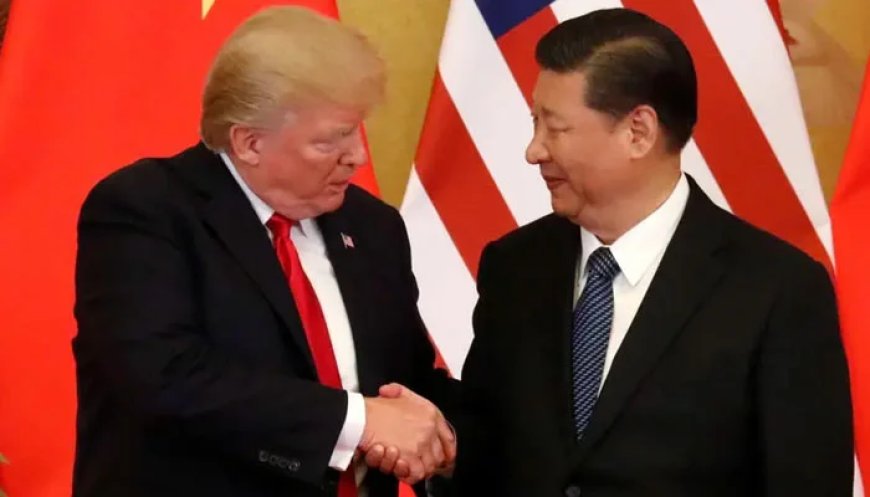What's at stake amid US-China trade tensions after Trump's sanctions

1. PIIE terms Beijing's dominant supplier of goods from electronics and electrical machinery to textiles and clothing
U.S. President Donald Trump's decision to impose an additional 10% tariff on China as part of his response to the country's alleged unfair trade practices and its role in the U.S. fentanyl crisis is expected to have significant repercussions.
In retaliation, Beijing has strongly opposed the tariffs, vowing to take "corresponding countermeasures" to protect its interests.
With escalating tensions, it's crucial to examine the trade relationship between the two largest economies, both of whom may be heading towards a full-blown trade war.
Trade Overview Trade between the U.S. and China, totaling more than $530 billion in the first 11 months of 2024, remains one of the largest global economic exchanges. During the same period, Chinese exports to the U.S. reached over $400 billion, second only to Mexico.
The Peterson Institute for International Economics (PIIE) notes that China is the leading supplier of goods, ranging from electronics and electrical machinery to textiles and clothing. However, the significant trade imbalance — which hit $270.4 billion from January to November 2024 — has been a point of contention in Washington.
Despite efforts to boost domestic consumption, China's economy remains heavily reliant on exports, making its leadership hesitant to alter the current trade dynamics.
Trump's First Term When Donald Trump entered the White House in 2016, he promised to confront China, initiating a trade war that imposed significant tariffs on hundreds of billions of dollars of Chinese goods. China responded with tariffs of its own, severely impacting U.S. farmers.
Key demands from the U.S. included greater market access and broad reforms in China's business environment. After extensive negotiations, both parties agreed to the "phase one" trade deal in January 2020, which temporarily paused the trade war. Under this agreement, China pledged to purchase $200 billion worth of U.S. goods, including $32 billion in agricultural products.
However, analysts claim that China did not meet these commitments, with the purchase rate falling well short of expectations. According to PIIE’s Chad P. Brown, China only bought 58% of the U.S. exports it agreed to under the deal, far below pre-trade war levels.
Biden Administration President Joe Biden did not reverse the tariffs implemented by Trump but focused on more targeted tariff hikes. Under Biden, the U.S. took steps to limit exports of advanced semiconductor chips to China and imposed tariffs on sectors like green energy, electric vehicles, batteries, and medical products.
In May 2023, Biden ordered tariffs on $18 billion worth of Chinese imports, including electric vehicles, which saw tariffs surge from 25% to 50%. Both countries have launched investigations into each other's alleged unfair trade practices, including probes into state subsidies and dumping.
What’s Next? Trump's latest announcement signals that his threat to raise tariffs was not just a negotiation tactic but a concrete step forward. He has also tied tariffs to the future of the Chinese-owned social media app TikTok, warning of retaliation if an agreement on its sale isn't reached.
In response, Beijing has expressed its firm opposition, promising retaliatory measures and stating its intention to take the case to the World Trade Organization (WTO). However, the likelihood of a quick resolution remains uncertain.
More immediately, China's foreign ministry warned that the new tariffs would harm future cooperation between the U.S. and China on drug control, complicating efforts to address the ongoing fentanyl crisis. This casts a shadow over recent counter-narcotics discussions, which resumed following Biden's meeting with Chinese President Xi Jinping in San Francisco in 2023.
As both nations continue to grapple with trade issues, the future of U.S.-China relations — including critical areas like drug control — hangs in the balance.


















































